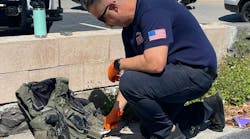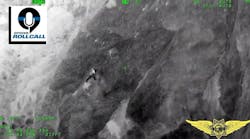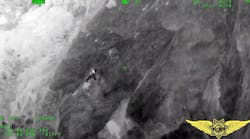The proliferation of Unmanned Aerial Systems (UAS) in the United States has increased substantially in recent years. Originally developed for military use, the civilian and commercial users are seeing unprecedented growth. Unmanned Aerial Systems is an acronym the Federal Aviation Administration (FAA) uses to describe all of the complex systems in addition to the actual air vehicle. You will also hear and read where they are referred to as Unmanned Aerial Vehicles (UAV). UAS can vary in sizes and are manufactured by companies such as DGI & Intel. Larger size UAS manufactured by Leptron and Raytheon are in use by law enforcement, federal government and the military. The wide ranging interest that ‘drones’ has with the public along with increasingly lower cost and rapidly developing technology has forced law enforcement and state legislatures to play ‘catch up’ to an emerging new technology that could, in the wrong hands, be a potential threat to public safety.
3 groups of operators
- Hobby
- Commercial
- Public Use
If you had a representative from each of the above groups standing next to each other, each would have different set of rules on operating UAS. Hobbyist have the most latitude when operating UAS. They are restricted to flying no higher than 400 feet and if they are within a 5 mile range of any airport they must give notice to the control tower or airport office. Hobbyist also are not required to have any licensing currently from the FAA. It’s as simple as purchasing a UAS online or from a big box retailer, take it out and up you go. They just have a list of ‘Do’s’ and ‘Don’ts. All Commercial use is prohibited unless the commercial operator has an exemption to fly. These are being more readily issued to movie production companies, agricultural businesses, etc. Law Enforcement/governmental agency’s fall under public use and have much stricter regulations than the 2 aforementioned groups.
3 Sizes of UAS
Unmanned Aerial Systems come in basically 3 sizes.
- UAS- military type ‘drones’
- sUAS- (Small UAS) Hobby size to include quad copters
- microUAS- smaller size that can fit in palm of hand and be launched.
Current Operating Requirements
For law enforcement to use a UAS on a SWAT operation or for that matter any police related incident, it must be operated by someone who has a pilot’s license. Yes, that’s right, you read correctly. All public use pilots must have a pilot’s license (in controlled airspace) or pass the FAA knowledge exam (uncontrolled airspace). Also, there is no exception for size of the UAS. You could have a micro UAS and it does not matter when you’re operating it outside. The FAA regulations are for operating the UAS outside anywhere. If your intention is to operate a small or micro UAS inside a structure, you are not required to have the pilot’s license. This is where there is a SWAT application (we will discuss later). The FAA’s regulations may seem strict and they are. It has been a challenging growing technology that has been introduced into the nation’s airspace. The United States has the most complex airspace in the world and their (FAA) approach has been incremental to say the least. Regardless, this requirement is probably the biggest obstacle to law enforcement agencies in obtaining unmanned aerial systems. Law enforcement agencies are intrigued about UAS application and usefulness in not only SWAT related operations but observation for crowds, traffic issues, planning and real time video. Even if you have a pilot’s license and there is a legitimate law enforcement need, you must obtain a certificate of authorization (COA). COA’s are required to operate for non-recreational purposes in the U.S. and are obtained from the FAA.
Proposed Regulations
The FAA has proposed a framework of regulations that would allow routine use of certain sUAS (less than 55lbs). The National Proposed Rule Making (NPRM) very well may cause a huge jump in UAS integration in the next 18 months. As a result that could benefit law enforcement and their ability to use sUAS on SWAT operations without a pilot’s license. Some of the noteworthy proposed changes:
- UAS weigh less than 55lbs
- Maximum altitude of 500 feet above ground level (AGL)
- Operators to obtain an unmanned aircraft operator certificate with a small UAS rating. (This may remove law enforcement agencies requirement to have a pilot’s license)
SWAT Application
Now that we have explained the background a bit, can a UAS be used as an effective tool in law enforcement? There are those who believe that the pilot’s license requirement is asking a lot and could be prohibitive for many agencies under the current FAA guidelines. Who is going to pay for the pilot’s licensing and aircraft and who will obtain the COA every time it will be used? I would suggest that if we use these as barometers every time there is a worth wild piece of equipment for SWAT, we would not have very many tools in the tool box. If your agency has an aviation unit, perhaps the pilots could be trained on a UAS and be of service on an operation if needed. Keep in mind how a UAS program could benefit your agency even if you do not have aviation support. UAS can be used in a similar manner to remotely controlled robots. As with every tool, there are advantages and disadvantages. Robots are great for clearing areas before team members make entry, however they are slow, prone to getting caught on objects, failing to negotiate stairs and running out of battery power at the wrong time. Small and micro UAS could fill the gap by flying into a structure and clearing areas that are too congested for the robot. Also, in larger structures, the UAS can be launched to cover more areas more quickly than the robot. Slow and methodical barricaded person searches could really benefit from such use and maximize operator safety. Stronghold assaults are the least desired for any SWAT team and the benefits of visual intelligence offered by a UAS could potentially save lives of everyone involved.
Criminal Use
Just as SWAT can use UAS as a tool to effectively increase officer safety, it can be abused and used against law enforcement. There is no stopping this technology and the advances that will be forthcoming. If you think that a lone wolf, or terrorist group will not at some point think of how to use a UAS in a terroristic manner, you’re kidding yourself. During SWAT operations, operators are always mindful of media helicopters on scene and broadcasting live feeds that could reveal team members positioning to the suspect(s). A request to leave the immediate air space usually does the trick, but how will you handle the suspect(s) quad copter flying over the operation and revealing the entire inner & perimeter positioning. What is your immediate action plan for that when it occurs? Are you authorized to launch a 40mm less lethal round at it? Is it even possible to impact the UAS in the air, even if it’s not in motion? No doubt, new areas of concern for SWAT commanders and operators. UAS are already appearing at or around football stadiums almost every weekend. Police sniper teams providing over watch have observed such and alerted other ground personnel to seek out the operator(s). These occurrences are becoming more and more often and fortunately the culprit to date is the innocent hobbyist. Ask yourself, if you can fly a camera attached to a quad copter into a public venue, what else can you fly attached to it?
Final Thoughts
The goal of this article is to promote thought on the part of law enforcement. There are some already doing their best to wrap their heads around this emerging technology that has potential for good and evil. There are also some in law enforcement who will not get on top of this until it smacks them in the face. UAS are here to stay and can be used as an asset for law enforcement as FAA regulations look to be less restrictive in the future. Each agency should decide if they have the funding, pilots and abilities to integrate UAS into police work. Take care and push yourself to be the best you can for your teammates and citizens you serve.


